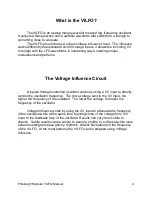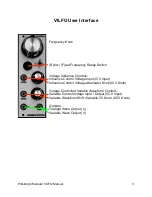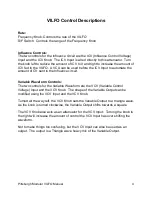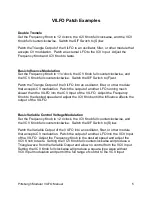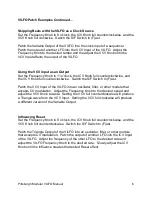
VILFO Patch Examples Continued...
Skipping Beats with the VILFO as a Clock Source
Set the Frequency Knob to 8 o'clock, the ICV Knob full counterclockwise, and the
VCV Knob full clockwise. Switch the S/F Switch to (F)ast.
Patch the Variable Output of the VILFO into the clock input of a sequencer.
Patch the output of another LFO into the VCV Input of the VILFO. Adjust the
Frequency Knob to the desired tempo and the adjust the VCV Knob until the
VCV Input affects the output of the VILFO.
Using the VCV Input as an Output
Set the Frequency Knob to 11 o'clock, the ICV Knob full counterclockwise, and
the VCV Knob full counterclockwise. Switch the S/F Switch to (F)ast.
Patch the VCV Input of the VILFO into an oscillator, filter, or other module that
accepts CV modulation. Adjust the Frequency Knob to the desired speed and
adjust the VCV Knob to taste. Setting the VCV full counterclockwise will produce
a Triangle wave from the VCV Input. Setting the VCV full clockwise will produce
a different version of the Variable Output.
Influencing Reset
Set the Frequency Knob to 8 o'clock, the ICV Knob full counterclockwise, and the
VCV Knob full counterclockwise. Switch the S/F Switch to (F)ast.
Patch the Triangle Output of the VILFO into an oscillator, filter, or other module
that accepts CV modulation. Patch the output of another LFO into the ICV Input
of the VILFO. Adjust the frequency of the other LFO to the desired rate and
adjust the VILFO Frequency Knob to the desired rate. Slowly adjust the ICV
Knob until the Influence creates the desired Reset effect.
Pittsburgh Modular VILFO Manual
!
6


